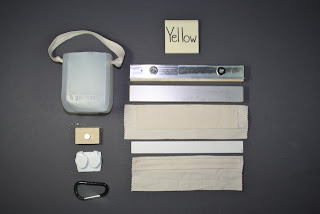Large textiles have been hung using Velcro since the 1970’s, with little change of technique. The first instructional handouts produced in the late 1970's, were from the Textile Museum and the Smithsonian Institution. The looped side of the Velcro is machine stitched to fabric, typically wide twill tape and then hand-stitched to the reverse side of the upper edge of a textile; while the hooked side is attached to the wall. However, over the years disadvantages of Velcro have come to light, like discoloration of the Velcro. In addition the loop-side of the Velcro that is sewn to the webbing and then hand stitched is quite bulky and poses difficulty with storage, whether rolled or boxed. In addition, stitching was not always a solution for all textiles.
Could magnets be an alternative, or even a substitute? Several methods of using magnets as an alternative have been developed by conservators recently.
The philosophy and design to an alternative to Velcro when hanging large textiles remains the same. A rule of thumb for Velcro is that it can support about 100 lbs per square inch (But this rule does not apply if the velcro has aged and the tiny hooks have deteriorated!). Finding a magnetic system that equals this is less straightforward. As stated in earlier posts, when using and selecting magnets of any type there are three key components that are in play. (see previous posts about magnets "Ferrous Attraction the Science Behind the Magic", et al, by clicking this link).
1.
The actual strength of the magnet itself.
2.
The ability of the metal behind it to be magnetized.
3. The space between, or the gap created by the
layers between the magnet and its receiving side.
 |
| Magnet components provided in the AIC Hands-on Session. |
The
challenge is that unlike paper, textiles can be quite heavy, creating a concern with
downward pull of the artifact, or sheer stress of the system that results in failure or compression of the artifact at the magnet site. One of the groups in the hands-on session at AIC 2013 tested out a solution developed by SmallCorp Inc.
This solution that solves the weight uses an aluminum strip with a small lower lip (L-shaped in cross-section). Disc magnets, Grade N42, measuring ½” / ¾” dia. X 1/8”, with counter sunk holes are fastened along at 4” intervals on the vertical side. A 22-gauge steel piece is held into a stitched sleeve along the upper edge of the artifact. In this solution the lower lip actually holds the weight of the artifact, but it is the magnets that ensure that the steel piece is held back and onto the aluminum horizontal element. See the diagram below.
This solution that solves the weight uses an aluminum strip with a small lower lip (L-shaped in cross-section). Disc magnets, Grade N42, measuring ½” / ¾” dia. X 1/8”, with counter sunk holes are fastened along at 4” intervals on the vertical side. A 22-gauge steel piece is held into a stitched sleeve along the upper edge of the artifact. In this solution the lower lip actually holds the weight of the artifact, but it is the magnets that ensure that the steel piece is held back and onto the aluminum horizontal element. See the diagram below.
The solution
appears to be able to support substantial weight due to the lower lip. The secured magnets can be adjusted closer or further
away from the vertical side, making the lip’s depth smaller if the protrusion
is too large for any specific situation.
 |
| Two up close images of the "L" bracket |
SmallCorp Inc. provides the metal components in the length that one desires (The "L"-shaped aluminum with the attached magnets and the powder-coated steel strip). The conservator or preparator creates the webbing sleeve for the powder-coated steel, just like one would for a Velcro system. Sewing the opening for the steel does need to be done with some precision in order to have a good fit. Then the webbing is stitched to the reverse side of the artifact. And you are ready to go!
 |
| The cotton webbing sleeve with the powder-coated steel plate, secured to the aluminum "L"-shaped mounting bar. _____________________________ Gwen Spicer is a textile conservator in private practice. Spicer Art Conservation specializes in textile conservation, object conservation, and the conservation of works on paper. Gwen's innovative treatment and mounting of flags and textiles is unrivaled. To contact her, please visit her website.
Learn more about magnets and their many uses in the new publications Magnetic Mounting Systems for Museums and Cultural Institutions. Available for purchase at www.spicerart.com/magnetbook.
|



No comments:
Post a Comment